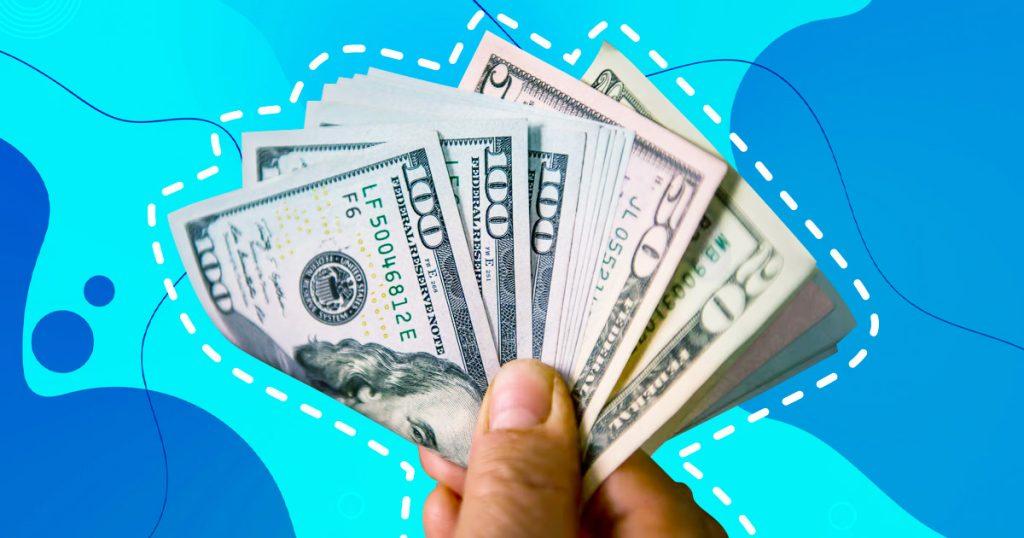For many people, the dream of financial independence and the ability to live off passive income is a compelling goal. The idea of living off dividends, where your investments generate a steady stream of income, can provide a sense of security and freedom. While it may seem like an unattainable dream, with careful planning and a disciplined approach, living off dividends is not impossible to achieve.
What it Means to Live Off Dividends
Living off dividends refers to relying on the regular income generated by your investments, specifically dividends, to cover your living expenses. Dividends are monetary distributions provided by certain companies to their shareholders, typically sourced from their earnings. By building a portfolio of dividend-paying stocks or other dividend-yielding investments, you can create a sustainable income stream.
Types of Investments that Pay Regular Dividends
Various investment options present the opportunity for consistent dividend payments. These investments are typically chosen for their ability to generate consistent income, making them suitable for individuals seeking to live off dividends.
- Dividend-Paying Stocks – Dividend-paying stocks are shares issued by companies that allocate a portion of their profits to shareholders as dividend payments. Such stocks are available in diverse sectors like technology, consumer goods, utilities, and finance. Investors typically seek companies with a reliable track record of dividend distribution and potential for future expansion.
- Real Estate Investment Trusts (REITs) – REITs, or real estate investment trusts, are enterprises that possess, manage, or finance real estate properties that generate income. As mandated by regulations, these companies are obligated to distribute a substantial portion of their taxable profits to shareholders in the form of dividends. Investing in REITs enables individuals to participate in real estate ventures without the need for direct property ownership.
- Dividend-Focused Mutual Funds – Mutual funds gather capital from numerous investors to create a diversified collection of securities, which may include dividend-paying stocks. Dividend-focused mutual funds concentrate on selecting companies that have a history of consistent dividend distributions. These funds offer professional management and can be a convenient option for investors seeking a diversified dividend portfolio.
- Dividend ETFs (Exchange-Traded Funds) – Exchange-Traded Funds (ETFs) operate in a manner akin to mutual funds but are traded on stock exchanges. Dividend ETFs, like their mutual fund counterparts, invest in a collection of dividend-paying stocks, granting investors access to a diversified portfolio. They are designed to track dividend-focused indices, offering an easy way to gain broad exposure to dividend-paying companies.
- Preferred Stocks – Preferred stocks are a form of equity investment that signifies partial ownership in a company. Unlike common stocks, preferred stocks typically pay fixed dividends at regular intervals. These dividends are prioritized over dividends paid to common shareholders. Preferred stocks can be an attractive option for income-focused investors seeking higher dividend yields.
- Bonds – While bonds are not commonly associated with dividends, certain types of bonds, such as corporate bonds, can provide regular interest payments. Corporate bonds are issued by companies to raise capital, and the interest paid by these bonds can serve as a source of income. Bond prices and yields are influenced by various factors, including interest rates and the creditworthiness of the issuing company.
- Dividend-Paying Savings Accounts and Certificates of Deposit (CDs) – Some financial institutions offer savings accounts and CDs that provide regular interest payments, which can serve as a form of dividend income. These options may have lower yields compared to other investments but can offer stability and liquidity for individuals seeking a conservative approach.
- Dividend Aristocrats – Dividend Aristocrats are a special category of companies known for their consistent track record of progressively raising dividends over a specific number of successive years. These companies are often seen as reliable dividend payers and can be considered for long-term dividend-focused investment strategies.
How Much Dividend Yield You Should Expect
The dividend yield is a key metric to consider when evaluating potential investments. It represents the annual dividend payment divided by the stock or investment’s price. The dividend yield can vary significantly among different stocks and investments. Typically, investments with higher yields offer greater income potential, but they may also come with increased risks. It is important to strike a balance between yield and the stability of the underlying investment.
Dividend Reinvestment Plan
A dividend reinvestment plan (DRIP) is a tactic in which dividends earned from investments are automatically used to buy additional shares of the same investment. This approach can accelerate the growth of your investment portfolio over time. Through the reinvestment of dividends, you have the opportunity to benefit from compounding returns, which has the potential to enhance your dividend income over the long term.
How Much Should Your Portfolio Have to Be Able to Live Off Dividends
The amount needed in your portfolio to live off dividends depends on several factors, including your desired income, lifestyle, and expenses. It is generally recommended to aim for a diverse portfolio that can generate enough income to cover your living expenses. Financial advisors often suggest targeting a portfolio value that is 25 to 30 times your desired annual income. This rule of thumb assumes a withdrawal rate of around 3% to 4% per year, which helps preserve the principal while providing a sustainable income stream.
Sample Computations
Let’s consider an example. Suppose you desire an annual income of $50,000 to cover your living expenses. Following the 3% to 4% withdrawal rate, you would need a portfolio value of approximately $1.25 to $1.67 million. If your investment portfolio has an average dividend yield of 3%, it would generate $37,500 in annual dividend income, fulfilling a significant portion of your income needs. Remember that these figures are for illustrative purposes only and should be tailored to your circumstances.
Living Off Dividends is Possible But Not Easy To Achieve
Living off dividends is a dream that is within reach with careful planning and a long-term investment strategy. By understanding what it means to live off dividends, selecting appropriate investments, and considering factors such as dividend yield and reinvestment plans, you can build a portfolio that generates a sustainable income stream.
However, it is crucial to recognize that achieving this goal requires work, time, and disciplined investing. It is advisable to seek guidance from a financial advisor who can help assess your unique situation and develop a personalized plan to achieve financial independence through living off dividends. With dedication and patience, you can turn your dream into a reality.



